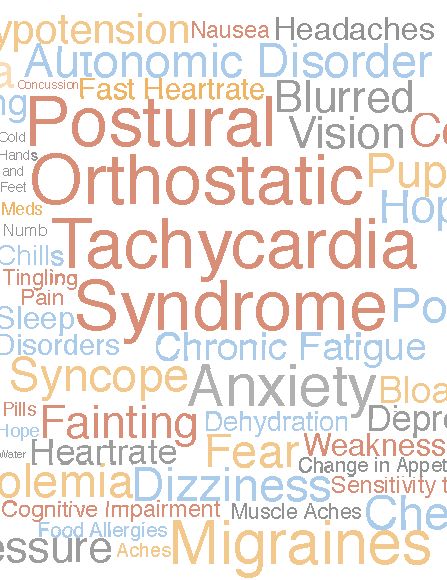The Dizzy, Can’t Stand for Long, Fidgety One

For most of my life, I can remember I had bouts of dizziness and nausea. My body does not like to stand for long. When I stand for a long time, I get very fidgety. I trip over my own two feet, regularly walk into door frames and can’t walk in a straight line, no matter how hard I try. For me, it was just normal to feel this way. I am clumsy.
I have Postural Orthostatic Tachycardic Syndrome (P.O.T.S.). What that means is my heart rate increases by 30 beats a minute every time I stand. If I must stand in place for any length of time, my feet will turn red. I get dizzy and will sit as soon as I can. This is connected to my Hypermobility Spectrum Disorder. I have extra stretchy veins and my body has to work very hard to keep my brain fed with blood and oxygen when I shift positions. A cardiologist made my diagnosis based on assessments at the Good Hope Clinic as well as a self-report and a test he ordered. I was supposed to have a tilt table test done to confirm his diagnosis, but Covid forced that clinic to close and I have not heard anything since.
What is P.O.T.S.
P.O.T.S. is characterized by a change in heartrate with a change in position (from lying or sitting to standing). When you have P.O.T.S. your body has a low blood volume return to the heart upon standing. This cause symptoms such as dizziness, feeling faint, anxious, digestion issues and more. It is a disorder of the autonomic nervous system.
Treatment
The cardiologist recommended that I make sure I drink lots of fluids and not just water by electrolytes. He wanted me to add more salt to my food. Salt does make me feel better on a POTS flare day. Another recommendation was compression tights. He offered a medication I could try if I could not control it through these methods.
Looking Back
Before my diagnosis, when forced to stand for long periods of time, I automatically lean on something, shift my weight around and fidget. This is my bodies way of regulating my cardiovascular system without even knowing I was doing it. Now I just recognize the symptoms and sit down to feel better when I can. I also make sure that I am getting enough fluids and salt.
I am happy that I finally have a name for what I have been dealing with since my teens. It wasn’t in my head like I was led to believe.